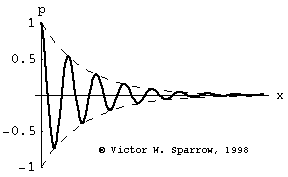Vic Sparrow's Acoustics and Vibration Animations
Giving Credit where Credit is Due
My own Acoustics and Vibration Animations. website has received a rather significant amount of attention in the acoustics education community since I first started posting animations back in 1997. I would like to publicly acknowledge that I learned how to make animations visualizing acoustics and vibration phenomena many years ago from Dr. Vic Sparrow. The animations he showed in the classes I took from him inspired me to learn to make my own.
Dr. Victor W. Sparrow is currently the United Technologies Corporation Professor of Acoustics in the Graduate Program in Acoustics. He is an internationally recognized expert on sonic booms generated by aircraft and the propagation of those sonic booms through the atmosphere. Dr. Sparrow teaches a number of important core and elective graduate courses in acoustics:
- ACS 501 -- Elements of Acoustics and Vibration
- ACS 502 -- Elements of Waves in Fluids
- ACS 515 -- Acoustics in Fluid Media
- ACS 540 -- Nonlinear Acoustics
- ACS 544 -- Computational Acoustics
- ACS 533 -- Outdoor Propagation of Sound
- ACS 551 -- Spatial Hearing and 3D Audio
Inspired by his animations, I started to learn how to make my own animations with Mathematica. I recently gained access to some old computer archives, and found a repository of old animations that Dr. Sparrow had created back in the 1990's when I was his student. I converted these old Quicktime MOV files into animated GIF files and have posted them here so that others can enjoy the elegance and the craftsmanship that inspired me to begin making my own animations.
These animations are shared here (for historical and nostalgic reasons), with Vic's permission. They are presented without much commentary -- as I have created similar animations with detailed explanations for most of these concepts on my website.
Vic Sparrow's Animations for Vibration (ca 1992-1998)
Modes of a 2-dof mass-spring system
From left to right: (Left) lowest frequency mode where both masses move in-phase in the same direction at the same time. (Middle) higher frequency mode where the masses move with opposite phase, in opposite directions. (Right) coupled motion where energy swaps back and forth between the two masses.
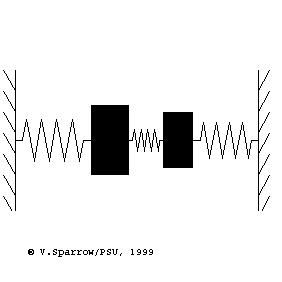
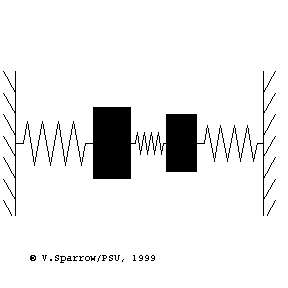
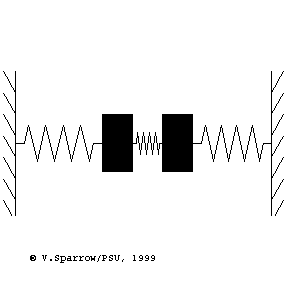
Oscillation of a 1-DOF Mass-Spring System, Damping, and Forced Response
(Left) A mass-spring simple harmonic oscillator. (Right) Exchange of Kinetic and Potential Energies as the mass-spring system oscillates
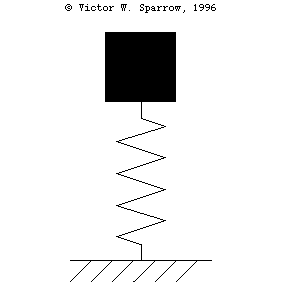
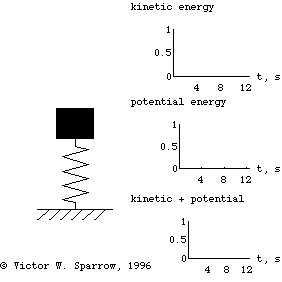
From Left to Right: [1] Under-damped mass-spring system. [2] Critically-damped mass-spring system. [3] Over-damped mass-spring system.
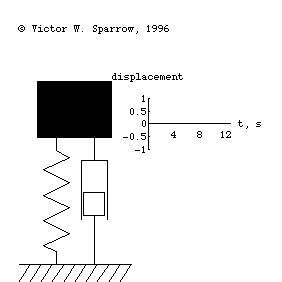
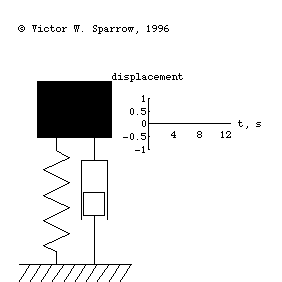
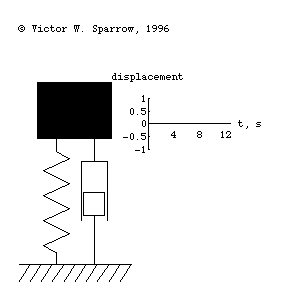
Forced, damped mass-spring system being driven at resonance.
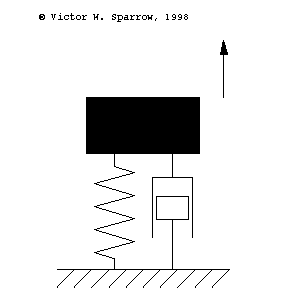
The Unit Circle
Comparing rotation (phasor) around the unit circle with the real part, which represents oscillation back and forth along the horizontal axis.
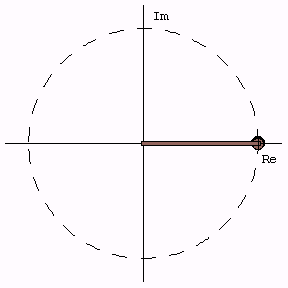
Flexural Bending Modes of a Free-Free Beam
The first three modes of vibration of a free-free beam, and a much higher frequency mode.




Modes in a Square Membrane
The first three modes of vibration of a square membrane, fixed at the edges.
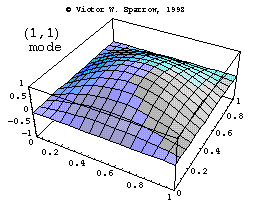
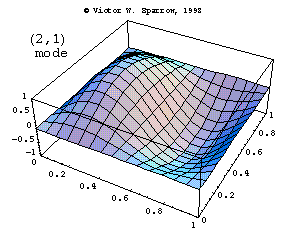
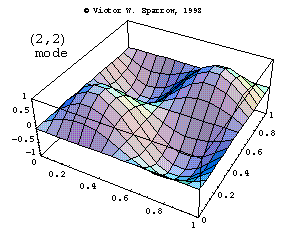
Vic Sparrow's Animations for Sound Waves (ca 1992-2001)
Superposition of Two Wave Pulses
(Left) Leftward traveling rectangular pulse. (Middle) Rightward traveling sinusoidal pulse. (Right) Superposition of these two pulses.
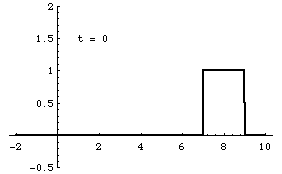
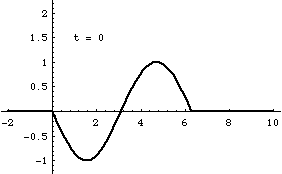
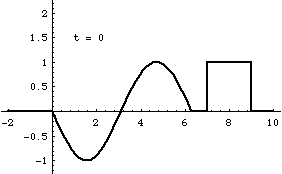
Superposition and Standing Waves
From left-to-right: [1] Right-traveling sine wave. [2] Left-traveling sine wave. [3] Superposition of these the right and left going waves results in a standing wave. [4] If the amplitudes of the right- and left-going waves are not exactly the same, the superposition result is not quite a standing wave. In this case, the amplitude of the right-going wave is slightly larger than the left-going wave.
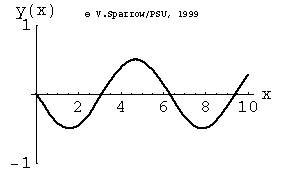
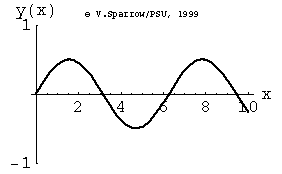
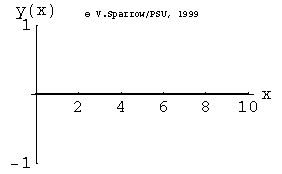
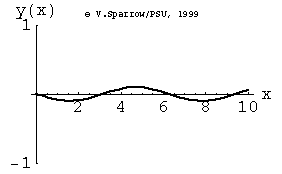
Monopole, Dipole, and Quadrupole Sources
(Left) A radially oscillating (pulsating) sphere - a monopole source. (Right)> A transversely oscillating sphere - a dipole source.
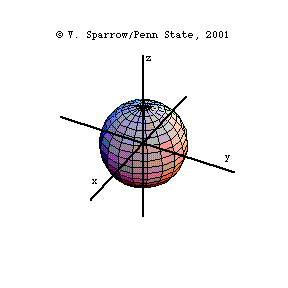
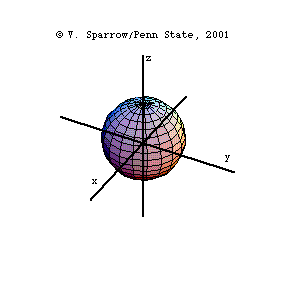
(Left) spherical sound wave created by a monopole source. (Right)> spherical sound wave created by a dipole source.
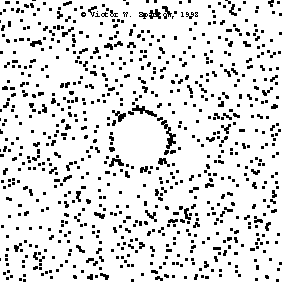
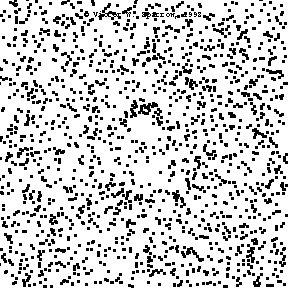
(Left) Two versions of a dipole-type source: two oppositely phased monopoles, and a transversely oscillating block. (Right)> Two versions of a lateral quadrupole-type source: each consisting of two oppositely phased dipoles.
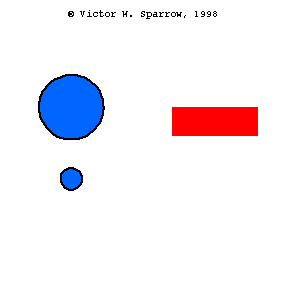
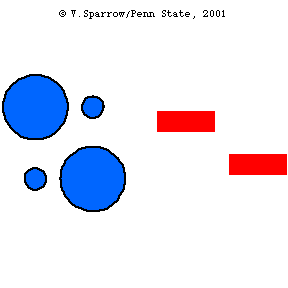
Plane Waves and Pistons
Piston driven, longitudinal plane waves in a tube.
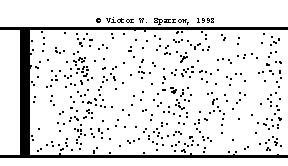
(Left) Piston oscillating in a rigid baffle. (Right) high frequency (ka=15) on-axis sound pressure radiated by a circular baffled piston
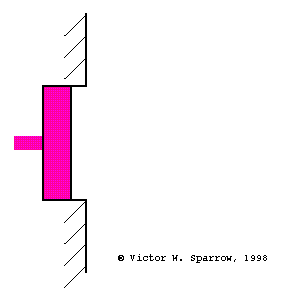
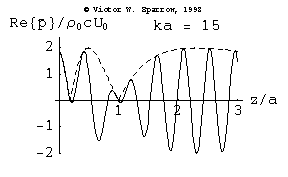
Pressure, Velocity, and Absorbing Layers
(Left) Particle velocity near a rigid wall is zero at the wall and maximum at a distance of 1/4 wavelength form the wall. A layer of absorbing material must be at least 1/4 wavelength thick in order to engage the sound wave at a location where the particle velocity is maximum (and thus produce maximum absorption through viscous losses) with a layer of absorbing material which is 1/4 wavelength thick. (Middle) Same as the left plot, but this time also showing the pressure (90o out of phase with velocity). (Right) Maximum absorption may also be achieved with a thin layer of absorbing material placed 1/4 wavelength from the wall.
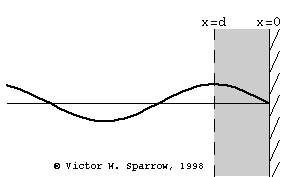
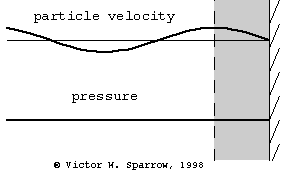
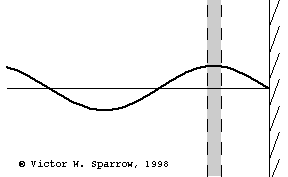
Resonant Absorber Devices
(Left) Helmholtz Resonator Absorber (Right) Tuned Plate (Panel) Absorber
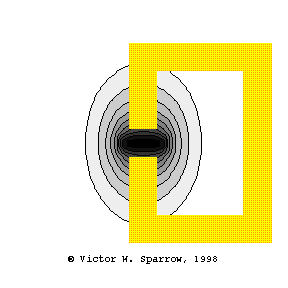
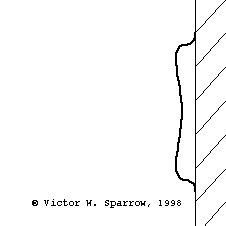
Coincidence -- Matching Trace Velocity
A plane wave in air is incident upon a wall, such that the trace velocity of the plane wave matches the velocity of bending waves in the wall. This is called "coincidence".
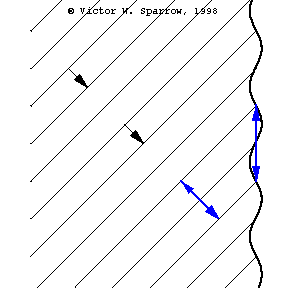
Phase Speed and Group Speed
A wave packet travels to the right at the group speed. The dot indicates the phase speed (moving with the peak of a wave within the envelope). In this case, the phase speed is greater than the group speed.
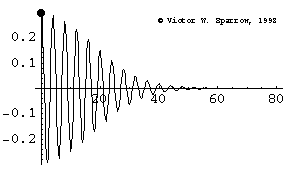
Lattice Gas Model of a Lossy Wave
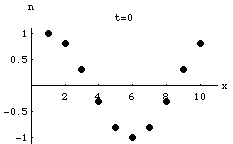
Exponential Attenuation as a Wave Propagates
